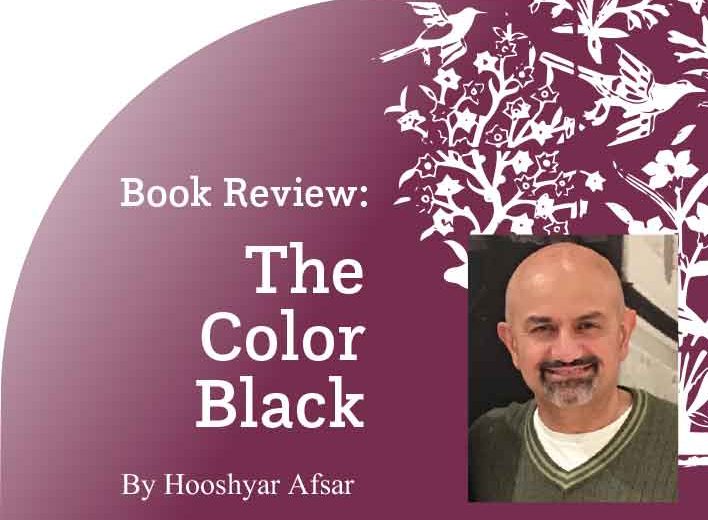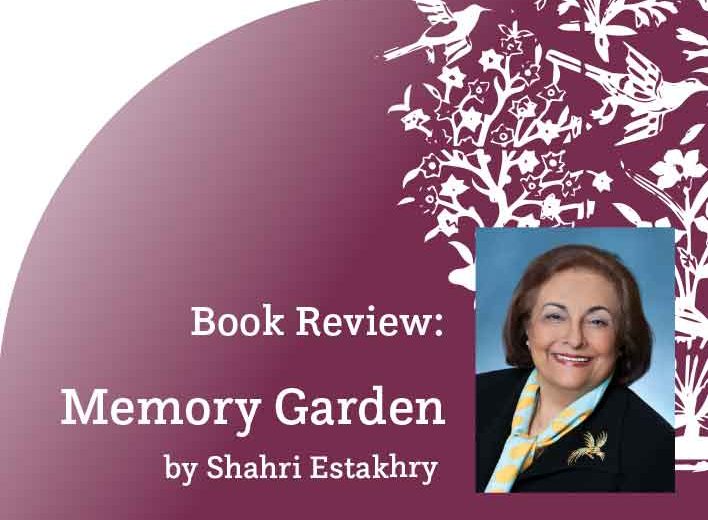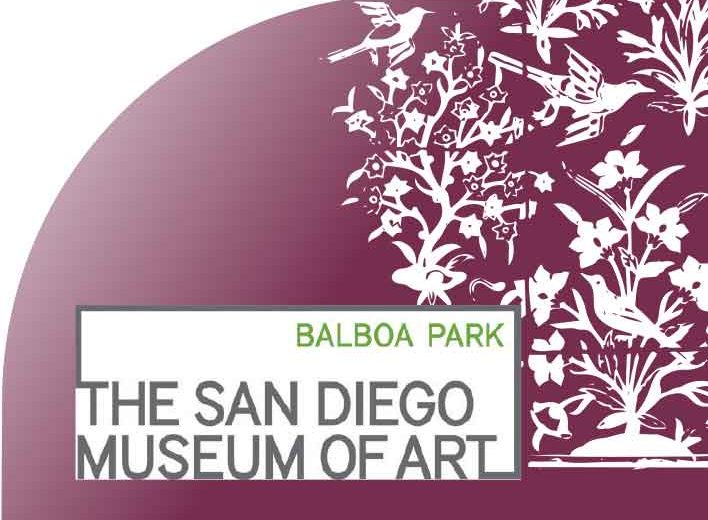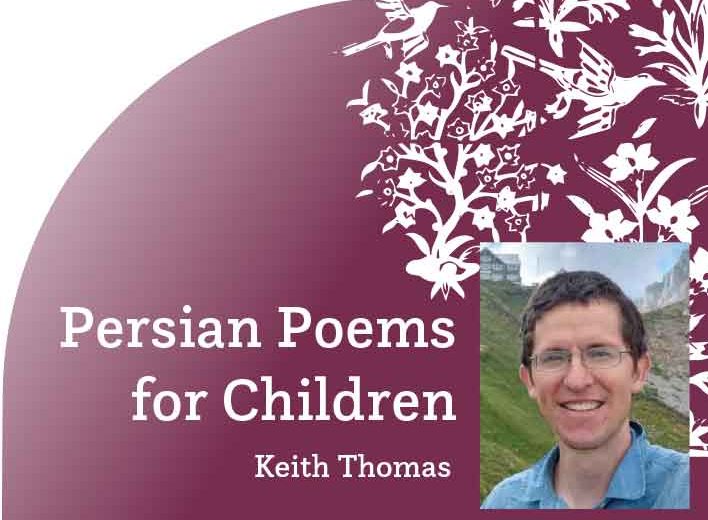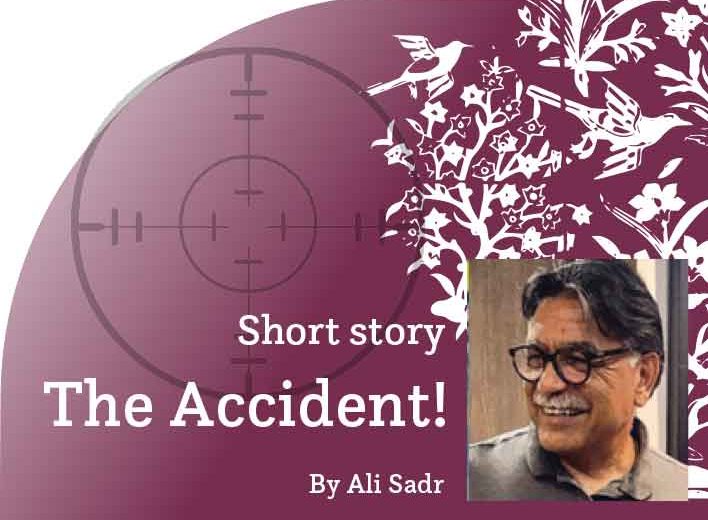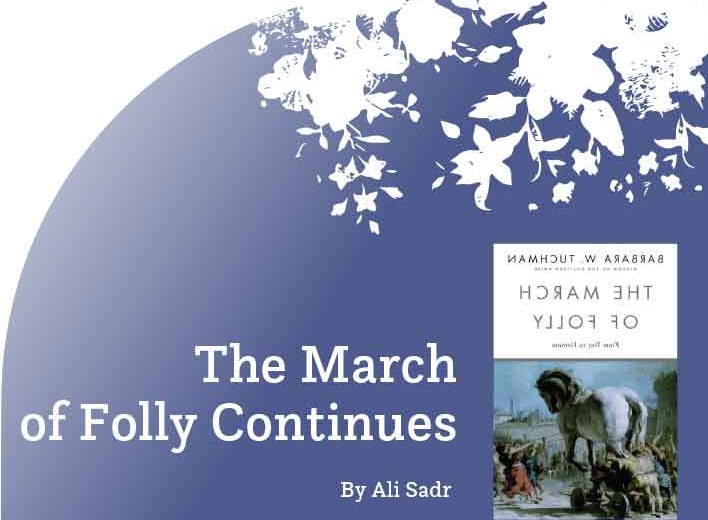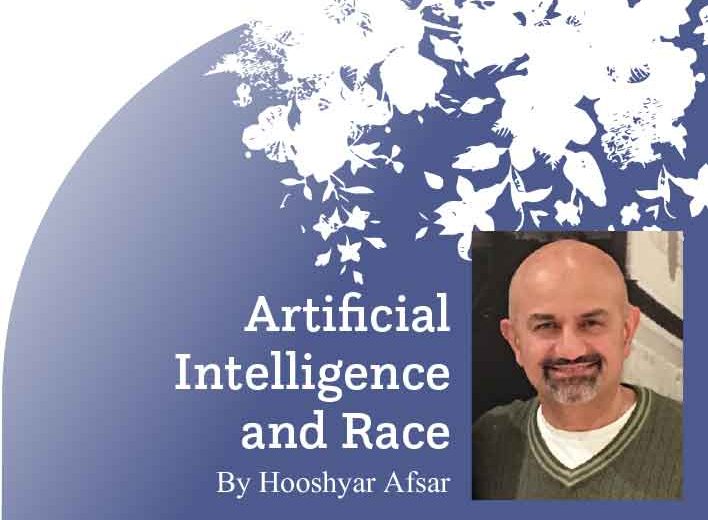The “Woman, Life, Freedom” Movement in Iran (“Zan, Zendegi, Azadi”):
How Did It Start and Where Is It Going
By Hooshyar Afsar
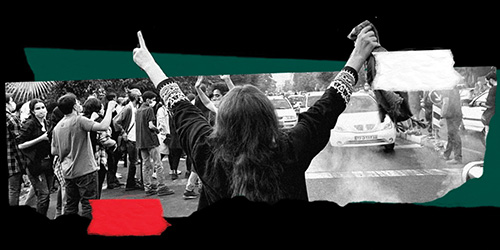 Introduction
Introduction
On September 13, 2022, Mahsa (Jina) Amini, a 22-year-old woman visiting Tehran from the city of Saqqez in the Kurdistan Province of Iran who was accompanying her 16-year-old brother, was arrested by Tehran’s morality police and was taken to a detention center. Video clips from the detention center show her having a conversation with a female official, after which she collapses. She was later taken to a hospital where the doctors declared her brain dead upon arrival. Mahsa died in the hospital two days later. Government officials published contradictory stories about her having pre-existing conditions and brain surgery during her childhood years, plus claiming that she had a heart attack in detention. Her father denied all such reports and said multiple times that Mahsa was a perfectly healthy 22 year old. There have been multiple reports that she suffered a brain injury as a result of blows to her head and an Instagram report by the hospital, which was later removed, also stated that she had a brain injury. An ex-commander of the revolutionary guards (IRGC) also said that his sources from IRGC confirmed that Mahsa had a brain injury and a ruptured spleen as a result of being beaten while in custody. A female reporter from Shargh, a daily paper in Tehran, went to the ICU at Kowsar Hospital before Mahsa died and published a report including a photo of her being hooked up to life support machines. The reporter was later detained and was taken to the notorious Evin prison.
Demonstrations started after Mahsa’s death, first with people gathering around the hospital and then later all over Iran. Over one hundred cities have seen demonstrations, with women taking a leadership role in many places by taking their head scarfs off and burning them in bonfires, often while dancing. University and high school students have joined in the protests from all over Iran. Many athletes, musicians, singers, writers, workers, and teachers unions have come out in support of the demonstrators. The protesters’ main slogan is “Woman, Life, Freedom,” which originated in Kurdish areas in the Kurdish language and is now chanted all over Iran in both Farsi and Kurdish. The government has responded by either shutting down the Internet or severely curbing it, attacking the demonstrators with live ammunition, and arresting student organizers, athletes, and singers. So far, different sources have reported over 200 deaths, including at least 23 children, hundreds injured, and at least a thousand arrested (1), with the city of Zahedan in the Sistan-Baluchestan province in the southeast having the highest number of deaths with at least 56. Hundreds if not thousands have been injured, but many avoid going to the hospital fearing arrest and persecution. After being out of sight for a few weeks—with The New York Times reporting that he was ill—Ayatollah Khamenei ( “the supreme leader of Islamic Republic”) finally made a speech on October 3, stating that the unrest is a conspiracy of the United States and Israel, clearly showing that the government refuses to see the authentic nature of the movement. There have been demonstrations all over the world in support of the “Woman, Life, Freedom” movement, with over one hundred thousand people participating; Toronto, Canada, had the largest demonstration with over 50,000 people marching and rallying.
In an attempt to understand why the movement has caught on so quickly and with far-reaching interest, let’s look at the background of the current movement and talk about its roots and future.
Background
The Iranian people have been facing severe economic hardships that are mainly caused by the government’s mismanagement of the economy and partially by the U.S. sanctions. Skyrocketing inflation, rampant corruption, severe devaluation of the currency, high rates of unemployment, plus social and political repression have been the ongoing trends in Iran’s economic, political, and social spheres for more than a decade. The major movements during this period, and prior to the current one, were the Green Movement of 2009 over the meddling in the presidential elections followed by multiple spontaneous uprisings over economic hardships in 2017 and 2018, and finally the protests over a sudden gas price hike in 2019. The COVID-19 pandemic possibly created a period of relative calm before the storm.
Then, during the 2021 presidential elections, the forces in power took the quasi-democratic vetting process for the candidates to a new extreme. The vetting body, Guardian Council, following the guidance of the Supreme Leader’s office, made sure their handpicked candidate, Ebrahim Raeisi, was chosen as the only major candidate. As a result, the official turnout was around 30% of eligible voters, the lowest in the history of the Islamic Republic. Estimates of turnout in Tehran and other major cities were even lower. The new administration is perhaps the most fanatic in the history of the Islamic Republic and that is a lot to say in a theocracy. In addition to the dire lack of macro management skills required for an administration of a country the size of Iran that has exacerbated the economic crisis, Raeisi’s government has attempted to put in place the harshest measures by morality police in enforcing the mandatory hijab. The morality police (elusively called “guidance patrol” in Persian) have been under direct orders to arrest women who don’t abide by the law. 
I have visited different parts of Iran up until late 2019 and my observation is that there is a huge gap the size of the Grand Canyon separating the absolute majority of people, especially younger generations, from the government and its policies. Iran has one of the highest rates of education (including higher education) plus Internet and smartphone usage in Southwest Asia and North Africa. In spite of many social media restrictions even during “normal” times (e.g., Twitter is reserved exclusively for people in power), people use any channel available (Instagram, Whatsapp, etc.) to stay informed. Also, a sizable number of households have satellite TV and can watch western news and entertainment channels. There are estimates that over five million Iranians live outside the country and the majority of them continue to be in touch with their families living in Iran. Finally, Iran’s civil society has grown significantly compared to the time of the Iranian revolution in February 1979. In addition to social media participation, which I believe should be included in the civil society definition, Iran has active trade unions in many branches of industry, active student movements, environmentalists, independent charities that have been curtailed because they have become too influential, an active press that has been repressed (many of its members are either in prison or are barred from producing journalistic content), and last but not least, a sizable number of activist lawyers, many of whom are in prison. So, contrary to the stereotypes about Iran in the mainstream media and regardless of government repression, even prior to the start of the “Woman, Life, Freedom” movement, there was tangible knowhow and experience to be socially and politically active.
A few words about Ebrahim Raeisi. The President of Islamic Republic is not a newcomer to the circles of power. He has an ominous reputation. In 1988, when the Iran-Iraq war was winding down, Ayatollah Khomeini, founder of Islamic Republic, wrote a directive based on which at least four thousand political prisoners, including many who had served their full sentence, were summarily retried and executed based on their beliefs. Mr. Raeisi was appointed as the head of the committee that was in charge of carrying out Khomeini’s directive. The issue has been corroborated by many human rights organizations and by the late Ayatollah Montazerie, who at the time was supposed to be Khomeini’s successor as the Supreme Leader. In fact, as recently as this past May, one of the active prosecutors in the mass execution campaign by the name of Hamid Nouri, who was arrested while traveling to Sweden, was convicted to life in prison after a 9-month trial, with many witnesses who had been in prison at the time or who had lost a loved one during the campaign testifying in court.
In short, before Mahsa’s death, Iran was on the verge of a major political upheaval and all the social, political, and economic conditions were ripe for an explosion of anger.
The Powder Keg Explodes
The senseless death of Mahsa Amini at the hands of morality police authorities shaped the movement in a broad fashion. One factor was her innocence—a young woman who simply attempted to explain to the authorities that she was visiting the megapolis of Tehran from a small city and they should let her go ended up with an irreversible brain injury leading to her death. Let’s not forget that from a basic human rights perspective, any police force that detains an individual is immediately responsible for the health and wellbeing of that person. So, even if Islamic Republic finds a rogue agent to blame (Raeisi has supposedly ordered an investigation), the whole system should be held responsible and accountable. Mahsa’s innocence has made it impossible to link her to a foreign power like the U.S., Israel, or Saudi Arabia. Of course, government officials are still attempting to link the movement to foreign powers, yet the absolute majority of Iranians refuse to live in that alternate reality. This factor, the innocence of Mahsa, broadens the movement. Many people inside the country who are not necessarily calling for an end to Islamic Republic, even those who are religious Muslims, are abhorred by Mahsa’s death and are calling for justice. So, what are the other characteristics of this movement that make it distinct from other unrests mentioned above?
Characteristics of This Movement
The movement is led by women, especially young women. The vision of the movement—Woman, Life, Freedom—comes from an original Kurdish slogan, making it truly democratic and putting the issues of women’s freedom over their bodies, their current existence, and their future at the core of the demands of the movement. The Kurdish aspect brings the notion of justice for all ethnic and national minorities to the front. Standing for life takes the movement beyond other demands and links it to the environment, a concept which was beautifully sung by singer Shervin Hajipour whose song is now repeated all over Iran and all over the world by the Iranian diaspora and who was jailed as a result. Last but not the least, freedom and democracy is now a world issue and the rise of authoritarianism in Europe makes this movement even more important worldwide. To summarize, “Woman, Life, Freedom” is an intersectionality of gender equality, racial and ethnic justice, political freedom and democracy, environmental justice and economic equality. No democratic movement in the history of Iran has ever had such a broad reach across the intersection of all those human rights.
One other important characteristic of this movement is that it is spontaneous and people at all levels are leading it without an organized center of leadership. Unlike stereotypical political movements for change that have a certain political party or a coalition of such groups and a designated leader, none of that exists here. My guess is that an organizing center shall emerge and the government is arresting many organizers because they are especially concerned about that possibility. I actually see the lack of a strong and organized leadership as a good thing for now because it paves the way for people’s creativity to emerge.
Another differentiating element is the powerful use of imagery by young Iranains in social media. The images and videos of Mahsa and young women who have been killed during the protests, namely Nika Shakarami and Sarina Esmaizadeh (both 16), are all over social media in a variety of artistic shapes and sizes. The images of women burning their headscarves in bonfires while dancing and women cutting their hair in solidarity have become powerful narratives utilized by the movement. This last symbolic action has now been repeated by women of various stature all over the world.
Finally, I should add two more important features. One is the level of support by famous athletes and other celebrities for the movement. This is definitely unique and makes the movement’s reach broader. Second is the active support by the Iranian diaspora that is unprecedented. I have never seen this level of participation and unity around one vision—namely, “Woman, Life, Freedom”—before. I am standing for this unity to persist.
Is It Different This Time?
The movement is not ending and is on track to soon be the longest independent democratic movement in Iran. All of the government’s repressive measures, including using live ammunition against peaceful protesters, shutting down the internet and social media, and arresting activists at all levels, have only exacerbated the situation for the rulers of Islamic Republic. There are clear signs that step by step, the street protests are linking up with trade unions and there is a strong possibility that local business shutdowns in Kurdish cities will become national, with trade unions joining the fray. The government is organized and has a small yet dedicated social base. Yet, this time there is a stronger chance to see fissures in the circles of power and the government’s social base.
What Can Iranian Americans Do?
So far, Iranian Americans have actively participated in demonstrations and on social media in support of the movement. Overall, there has been remarkable unity around the “Woman, Life, Freedom” vision. We need to keep the unity and activism going. We are showing a whole new level of maturity in working with each other and supporting the movement. We should safeguard that foundation and make it stronger. A national coordinating committee that welcomes everyone who stands for “Woman, Life, Freedom” could help with future action. So far, mainstream media has given meager coverage of the events in Iran and the solidarity movement abroad. We need to use all the resources at our disposal to change that. Broad and positive mainstream media coverage could shift the dehumanizing image that has been created of Iran and Iranians in the U.S. Finally, with November elections coming, we need to link the issue of women’s rights and democracy in Iran to what is at stake in the U.S. in November, strengthening the solidarity of the “Women, Life, Freedom” movement with women’s freedom over their bodies and safeguarding the democratic rights in this country.
https://iranhumanrights.org/2022/10/joint-statement-43-rights-groups-call-for-urgent-action-on-iran-at-un-human-rights-council/
Hooshyar Afsar is one of the founders of Racism Awareness Project (RAP), an educational program on the history of and present-day racism in the United States and its impact on the Iranian American community. RAP has had a variety of educational forums across the United States. Mr. Afsar has written several articles and book reviews on the topic for Peyk and other publications. He can be reached at hoosh.afsar@rapusa.org.


